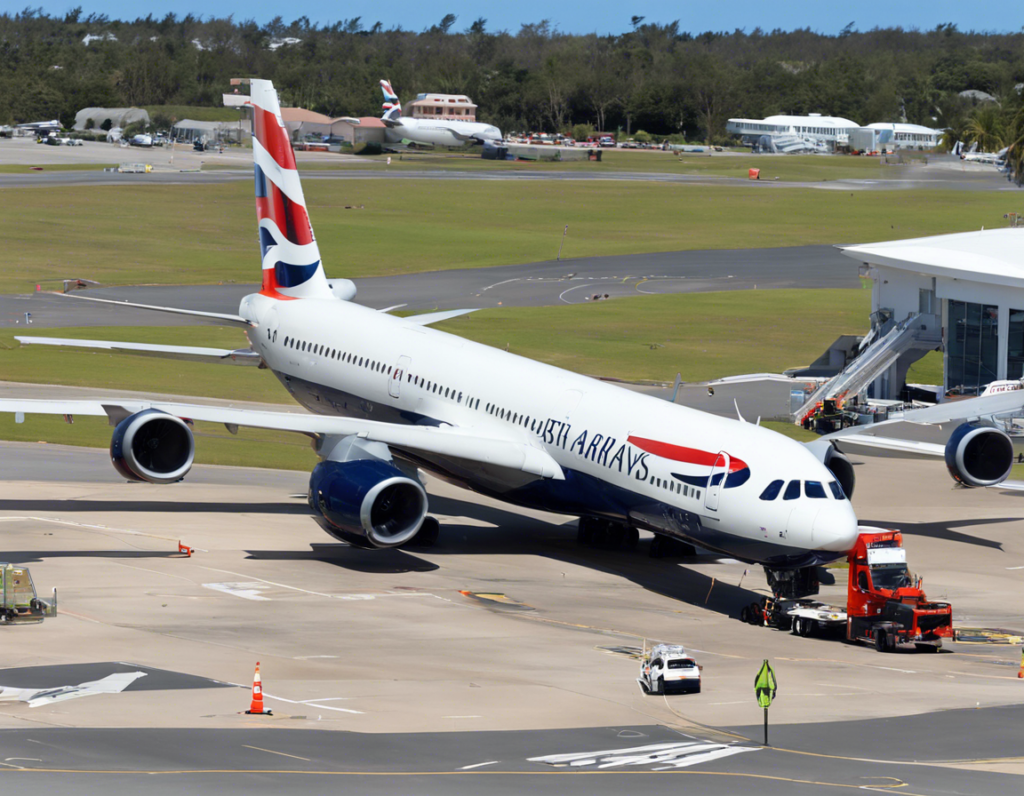On October 28, 2019, a British Airways flight traveling from London to Bermuda was faced with a bomb scare, causing panic and confusion among passengers and crew members. The incident, later revealed to be a false alarm, sparked a series of events that shed light on the importance of emergency protocols in aviation, the role of law enforcement agencies in handling such situations, and the impact of misinformation in a technologically interconnected world.
The Context
The flight, carrying over 200 passengers and crew members, was en route to Bermuda when an unidentified individual claimed to have placed a bomb onboard the aircraft. The pilot, upon receiving this threatening message, immediately alerted air traffic controllers and followed security procedures, including diverting the plane to a designated airport for emergency landing.
Emergency Response
Emergency responders, including Bomb Disposal Units, K-9 Units, and Law Enforcement agencies, swiftly mobilized to secure the airport and assess the potential threat. Passengers were evacuated from the aircraft as bomb experts conducted thorough searches for any suspicious objects or devices.
Investigation and Resolution
Following an extensive search operation, no explosive devices were found onboard the aircraft, leading authorities to declare the threat as a hoax. The misinformation generated fear and anxiety among passengers and highlighted the challenges of dealing with security threats in the aviation industry.
Impact and Lessons Learned
The British Airways Bermuda Bomb Scare underscored the significance of effective communication between airlines, authorities, and passengers during emergencies. It also emphasized the need for robust security protocols and Crisis Management Plans to address potential threats and ensure passenger safety.
Key Takeaways
- Safety First: The safety and security of passengers and crew members are paramount in any emergency situation.
- Proactive Measures: Airlines should regularly review and enhance their security protocols to mitigate risks and respond effectively to threats.
- Collaboration is Key: Close coordination between airlines, airports, and law enforcement agencies is essential for swift and coordinated responses to security incidents.
- Communication: Transparent and timely communication with passengers can alleviate anxiety and confusion during emergencies.
FAQs (Frequently Asked Questions)
Q: What led to the bomb scare on the British Airways flight to Bermuda?
A: An unidentified individual claimed to have placed a bomb onboard the aircraft, prompting the pilot to initiate emergency protocols.
Q: How did authorities respond to the bomb threat?
A: Emergency responders, including Bomb Disposal Units and Law Enforcement agencies, conducted thorough searches and evacuations to ensure passenger safety.
Q: Was there an actual bomb found on the aircraft?
A: No, after an extensive search, authorities confirmed that the bomb threat was a hoax, and no explosive devices were discovered.
Q: What lessons can be learned from the British Airways Bermuda Bomb Scare?
A: The incident highlighted the importance of effective communication, robust security protocols, and collaboration among stakeholders in the aviation industry.
Q: How can airlines improve their crisis management strategies in light of such incidents?
A: Airlines can enhance their crisis management plans by conducting regular drills, training staff on emergency procedures, and fostering strong partnerships with law enforcement agencies.
In conclusion, the British Airways Bermuda Bomb Scare serves as a sobering reminder of the ever-present risks and challenges in the aviation sector. By learning from such incidents, implementing proactive measures, and prioritizing passenger safety, airlines can better prepare for emergencies and ensure a secure travel experience for all.
